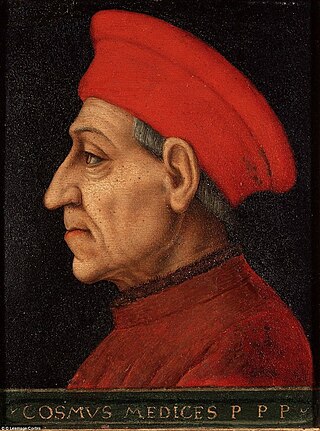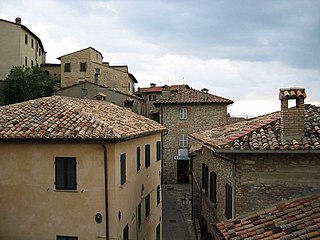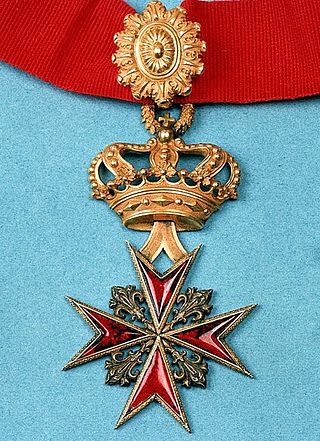History
A town of medieval origin in the orbit of Viterbo, it was assumed into the Papal States and granted first to the Capocci family, and then to the Roman nobles Ludovico and Pietro Frangipani who walled the community. Tolfa achieved sudden importance following the discovery there in 1461 of large deposits of alunite, the source of alum, with the result that direct control was assumed, after some confrontations with the Frangipani, by the Camera Apostolica. Alum was an essential mordant in the textile industry, which was central to the Late Medieval and Early Modern Italian economy. Previously, the only supplies of alum were imported from the East, from sources controlled by the Ottoman Turks, through Venice, which profited greatly. Suddenly, the monopoly of alum shifted to the Papacy, which controlled Tolfa; Pope Pius II placed its distribution solely in the hands of the Medici, with the explicit thought that the income from this monopoly should be devoted to the Christian res publica as the infidel Turk, elated by his victories, threatened to devour Christendom. [4] Later, the monopoly in extraction of alum at Tolfa passed as a papal gift to Agostino Chigi.
In 1530, Pope Clement VII granted the status of comune to Tolfa, which had outgrown its medieval walls. In later times, Tolfa continued to be supported by the extraction of alum. Near the mine, the workmen's village of Allumiere was built; it became an autonomous comune in 1826.

Lorenzo di Piero de' Medici, known as Lorenzo the Magnificent, was an Italian statesman, the de facto ruler of the Florentine Republic, and the most powerful patron of Renaissance culture in Italy. Lorenzo held the balance of power within the Italic League, an alliance of states that stabilized political conditions on the Italian Peninsula for decades, and his life coincided with the mature phase of the Italian Renaissance and the golden age of Florence. As a patron, he is best known for his sponsorship of artists such as Botticelli and Michelangelo. On the foreign policy front, Lorenzo manifested a clear plan to stem the territorial ambitions of Pope Sixtus IV, in the name of the balance of the Italic League of 1454. For these reasons, Lorenzo was the subject of the Pazzi conspiracy (1478), in which his brother Giuliano was assassinated. The Peace of Lodi of 1454 that he supported among the various Italian states collapsed with his death. He is buried in the Medici Chapel in Florence.

Pope Pius IV, born Giovanni Angelo Medici, was head of the Catholic Church and ruler of the Papal States from 25 December 1559 to his death, in December 1565. Born in Milan, his family considered itself a branch of the House of Medici and used the same coat of arms. Although modern historians have found no proof of this connection, the Medici of Florence recognized the claims of the Medici of Milan in the early 16th century.

The House of Medici was an Italian banking family and political dynasty that first consolidated power in the Republic of Florence under Cosimo de' Medici during the first half of the 15th century. The family originated in the Mugello region of Tuscany, and prospered gradually until it was able to fund the Medici Bank. This bank was the largest in Europe during the 15th century and facilitated the Medicis' rise to political power in Florence, although they officially remained citizens rather than monarchs until the 16th century.

Viterbo is a city and comune (municipality) in the Lazio region of Italy, the capital of the province of Viterbo.

Cosimo di Giovanni de' Medici was an Italian banker and politician who established the Medici family as effective rulers of Florence during much of the Italian Renaissance. His power derived from his wealth as a banker and intermarriage with other rich and powerful families. He was a patron of arts, learning, and architecture. He spent over 600,000 gold florins on art and culture, including Donatello's David, the first freestanding nude male sculpture since antiquity.

The Republic of Florence, known officially as the Florentine Republic, was a medieval and early modern state that was centered on the Italian city of Florence in Tuscany, Italy. The republic originated in 1115, when the Florentine people rebelled against the Margraviate of Tuscany upon the death of Matilda of Tuscany, who controlled vast territories that included Florence. The Florentines formed a commune in her successors' place. The republic was ruled by a council known as the Signoria of Florence. The signoria was chosen by the gonfaloniere, who was elected every two months by Florentine guild members.

Civitavecchia is a city and major sea port on the Tyrrhenian Sea 60 kilometres west-northwest of Rome. Its legal status is a comune (municipality) of Rome, Lazio.

Bracciano is a small town in the Italian region of Lazio, 30 kilometres northwest of Rome. The town is famous for its volcanic lake and for a particularly well-preserved medieval castle Castello Orsini-Odescalchi. The lake is widely used for sailing and is popular with tourists; the castle has hosted a number of events, especially weddings of actors and singers.

Senigallia is a comune (municipality) and port town on Italy's Adriatic coast. It is situated in the province of Ancona, in the Italian region of Marche, and lies approximately 30 kilometers north-west of the provincial capital city Ancona. Senigallia's small port is located at the mouth of the River Misa. It is one of the endpoints of the Massa–Senigallia Line, one of the most important dividing lines (isoglosses) in the classification of the Romance languages.

The House of Piccolomini is the name of an Italian noble family, Patricians of Siena, who were prominent from the beginning of the 13th century until the 18th century. The family achieved the recognized titles of Pope of the Catholic Church, Prince of the Holy Roman Empire, Grandee of Spain, and Duke of Amalfi. The family is also featured in Florentine Histories, a book written by Niccolò Machiavelli, where he describes the reign of Pope Pius II, who had allied himself with the Venetians and Prince Vlad Dracula, to wage a war against the Sultan of the Ottoman empire.

Montevarchi is a town and comune in the province of Arezzo, Tuscany, Italy.

Castel del Monte is a medieval and Renaissance hill town and comune in the province of L'Aquila in northern Abruzzo, Italy. Located in the heart of the Gran Sasso mountain range, the town is set into a steep hillside nestled beneath mountain peaks near the high plain of Campo Imperatore. Castel del Monte sits opposite the ancient mountaintop fortress of Rocca Calascio and faces Monte Sirente in the distance. It is located in the Gran Sasso e Monti della Laga National Park. It is one of I Borghi più belli d'Italia.

The Republic of Siena was a historic state consisting of the city of Siena and its surrounding territory in Tuscany, central Italy. It existed for over 400 years, from 1125 to 1555. During its existence, it gradually expanded throughout southern Tuscany becoming one of the major economic powers of the Middle Ages, and one of the most important commercial, financial and artistic centers in Europe.

Montone is a comune (municipality) in the Province of Perugia in the Italian region Umbria, located about 35 km north of Perugia. It is one of I Borghi più belli d'Italia.

The Medici Bank was a financial institution created by the Medici family in Italy during the 15th century (1397–1494). It was the largest and most respected bank in Europe during its prime. There are some estimates that the Medici family was, for a period of time, the wealthiest family in Europe. Estimating their wealth in today's money is difficult and imprecise, considering that they owned art, land, and gold. With this monetary wealth, the family acquired political power initially in Florence, and later in the wider spheres of Italy and Europe.
Gabriele Serbelloni, better known as Gabrio Serbelloni, was an Italian condottiero and general. A noble by birth, he achieved an even higher status through his military accomplishments as well as his family connections. He defended Asti against the French in 1551 and was made governor of Saluzzo after conquering the town. He was made Captain General of the Papal Guard in 1559 when one of his cousins was elected pope. Later he entered the service of Philip II of Spain, joined the Knights of Malta and received the title Prior of Hungary. He took part in the suppression of the Dutch Revolt in 1567 and captured Tunis in 1573. He was humiliated when the town was besieged and captured by Ottoman forces. He was later released in a prisoner of war exchange and eventually died in Milan.

The Order of Saint Stephen is a Roman Catholic Tuscan dynastic military order founded in 1561. The order was created by Cosimo I de' Medici, first Grand Duke of Tuscany. The last member of the Medici dynasty to be a leader of the order was Gian Gastone de Medici in 1737. The order was permanently abolished in 1859 by the annexation of Tuscany to the Kingdom of Sardinia. The former Kingdom of Italy and the current Italian Republic also did not recognize the order as a legal entity but tolerates it as a private body.

Castello Orsini-Odescalchi is a castle in Bracciano, Lazio, Italy. It is located on the southern shore of Lake Bracciano. It was built in the 15th century, and combines the functions of a military defence structure and a civilian residence of the feudal lords of the period, the Orsini and Borgia, both papal families. As one of the largest and best-maintained castles in Italy, it also houses a museum; as a centre of cultural events, the Castello has hosted several high-profile weddings such as those of Tom Cruise/Katie Holmes, Eros Ramazzotti/Michelle Hunziker, and Petra Ecclestone/James Stunt.
Giovanni Aldobrandini was an Italian Roman Catholic bishop and cardinal.

Medici is a historical drama television series created by Frank Spotnitz and Nicholas Meyer. The series was produced by Italian companies Lux Vide and Rai Fiction, in collaboration with Spotnitz's Big Light Productions. The series follows the House of Medici, bankers of the Pope, in 15th-century Florence. Each season follows the events of a particular moment of the family's history exploring the political and artistic landscape of Renaissance Italy.




















